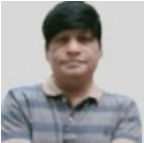Indian cinema’s quintessential Art Director
If Art Direction is a craft, Nitin Desai took it to pristine levels. He was a genius, a visionary artist who not only knew his calling inside out, but also the people who laboured over its comprehension. A stalwart in production design, he had become an integral and inseparable part of Indian cinema’s fraternity. As one who designed some of the most iconic sets, he was also known to be a large-hearted Marathi Manoos who rose to dizzying heights in the glitz and glamour of Bollywood.
Born in Dapoli, Konkan’s scenic coast, on 9 August 1965, Desai grew up in Mulund, a quiet suburb in central Mumbai. As one who studied at the JJ School of Art, he had an uncanny knack of looking at things and how they ought to look under the scrutinising gaze of the camera. His tryst with films began in 1987 as an assistant for TV serial Tamas. It was Yash Chopra who steeled him for Bollywood, and later, his assistant Sanjay Leela Bhansali who ushered him into spotlight.
Industry insiders recall how in 1994 people thought it was a huge risk to hand over the work to a novice Desai for the Vidhu Vinod Chopra blockbuster, 1942: A Love Story. Desai not only proved naysayers wrong, he won the Filmfare Award for that Rs 80 lakh set. It was the beginning of his rise and rise. Bhansali aligned with his vision and together they made history in Khamoshi and Hum Dil De Chuke Sanam, where both thrived on their experimental instincts. Bhansali taught him to think big and look at the wider picture. The extravaganza that Desai brought to his Devdas was in evidence again but ironically, the latter had laughed off at the absurdity of Devdas’ grandeur. The sets cost in crores and one could only gasp at their majesty. Fable has it that then Maharashtra Governor P.C. Alexander had requested the Film City Director to retain Chandramukhi’s ‘kotha’ as a permanent tourist spot. How Desai managed to give them the magnificence is stuff folklores are made of.
From Lagan (2001), Jodha Akbar (2008), Prem Ratan Dhan Payo (2015), not to speak of other Marathi and Hindi films, Desai kept conquering new horizons and setting new benchmarks. Top names like Ashutosh Gowariker, Vidhu Vinod Chopra, Rajkumar Hirani and Sanjay Leela Bhansali courted his craft. However, when he turned a film producer himself with a devotional film Desh Devi, he made it a minimalistic beauty – showing he could straddle all genres, all budgets.
Desai won four National Awards and three Filmfare Awards. In 2005, he set up his own ND Studios in Karjat spread over 52 acres which was also host to the reality Big Boss show. The journey that began as second fiddle in TV serials culminated into films with Bhookamp, a film by Aadhikari Brothers in 1993. There was no looking back thereafter as Desai struck gold with 1942: A Love Story. The titles of Parinda, Maachis, Baadshah, Dr Babasaheb Ambedkar proudly proclaimed his name. Salaam Bombay and Amok (a French film) brought him global spotlight. Jungle Book, Kamasutra, Such a Long Journey and Holy Smoke (both foreign films), Slumdog Millionaire and an expansive KBC set, carried his trademark imprint. With Raja Shivchhatrapati, he turned TV series producer. The Marathi biopic Balgandharva (2011) was his production.
At his peak, he debuted as a lead actor in Hello Jai Hind directed by Gajendra Ahire. Most of his blockbusters were period films. With mounting success, his debts too mounted and financial crises followed. He defaulted on his Rs 252-crore loans and a bankruptcy court had admitted an insolvency petition against him.
For someone whose imagination knew no bounds; Desai was apparently bogged down and stress had begun to take its toll. He chose to end his life on 2 August 2023 at just 57 – a complete anti-thesis of a personality who seemed a fighter all the way.


